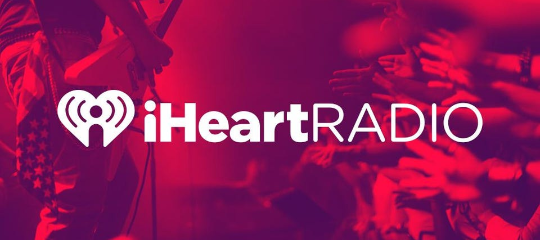
- Press Releases
- Dec 19, 2019
Portland, Ore., December 17, 2019: Marketing attribution is poised for a challenging leap in 2020. The innovators and early adopters have been feasting, optimizing return on ad spend (ROAS) by deploying sophisticated universal tracking and multi-touch technologies.
The competition is catching up. In 2020, marketing attribution will cross the chasm into widespread adoption. As the industry jumps forward, marketing attribution software company LeadsRx is looking into its impartial multi-touch attribution crystal ball to identify three challenging trends that will separate winning marketers from those who get left behind:
Virtual is Reality
LeadsRx prediction for marketing executives: In 2020 courageous marketers need to factor in virtual assisted technologies and how they are impacting their understanding of the customer journey. Those who prepare will reap the significant ROAS opportunities; those who don’t will experience a growing blind spot in their marketing vision.
Virtual assistants — including intelligent chatbots and other forms of artificial intelligence (AI) — will play a vital role in the customer journey. In the next five years, AI is expected to manage 70 percent to 90 percent of all initial customer interactions. Marketers who aren’t including this important touchpoint in their attribution modeling stand to lose out on critically important insights.
The rapid adoption of AI technologies, coupled with the high level of trust they’ve engendered in both buyers and sellers, has elevated virtual assistants (VA’s) well beyond the role of menial task managers. VA’s now provide critical touchpoints in the customer journey.
In the automotive industry, intelligent chatbots are motivating online shoppers to visit showrooms, leading to vehicle sales. The chatbot has become a salesperson—initiating conversation, answering questions, building trust—before passing the customer to a human being to complete the transaction.
Layered on top of the VA boom is the increasing use of smart speakers like Amazon Echo and Google Home. Ownership of these devices in the US grew 140 percent from 2017 to 2018. With voice commands, consumers can have an entirely virtual buying experience from start to finish, without the ad views and clicks that marketers rely on.
A Bridge to Streaming
LeadsRx prediction for marketing executives: Embrace customers across all broadcast mediums to build long lasting relationships. Success requires employing universal tracking technologies that bridge across streaming platforms spanning TV, radio, podcasts and mobile gaming.
As the streaming audience surpasses many traditional channels, universal tracking technologies need to span and incorporate systems like addressable TV and streaming radio.
An estimated 3.5 million households cut the cord on pay TV last year, underscoring a clear message from consumers: they want their content when they want it, where they want it. As a result, a higher percentage of US households now have a video streaming subscription than have a pay TV subscription.
Those households are creating a la carte solutions, subscribing to an average of three video streaming services to get the features they value most. More than half of Millennials and Gen Z consumers also subscribe to streaming services for music and gaming.
This patchwork landscape presents an opportunity for intrepid attribution marketers. Ad spend on streaming services increasingly requires a tactical and targeted approach, as consumers have cited ad load as a major reason for turning away from traditional channels.
A recent study indicates that viewers have a maximum tolerance of sixteen minutes of ads per hour, with a Goldilocks target of eight minutes. Traditional pay TV peaks at roughly twenty minutes of advertising per hour. In addition to the time threshold, viewers are particularly turned off by frequent repetition of the same ads.
Radio Sets the Tone
LeadsRx prediction for marketing executives: The radio industry’s pervasive success using marketing attribution set a benchmark and major brands are reaping the rewards. In 2020, there will be a marked increase in the number global and local brands and agencies applying the same techniques to their digital spend and arming themselves with attribution data that can be easily communicated to C-level executives in a compelling, relatable manner.
The radio industry’s dominant use of marketing attribution to track conversions and web lift will spread into mainstream adoption, likely triggering a tipping point for all mediums including digital, direct mail, telemarketing, out-of-home, and more. A recent study joint study from iHeartMedia and LeadsRx on the Five Secrets for Automotive Advertising showcases how smart advertisers are leveraging attribution to optimize ad campaigns on radio.
The coming year will no doubt spark innumerable conversations about the digital-first mindset, the Internet of Things and the emergence of any number of new technologies. Easy in that environment for marketers to fall into a herd mentality, placing their ad faith—and budget—in Facebook, Google and Instagram.
In 2020, data-driven marketers will be wise to break from the herd and model an unlikely trendsetter: radio. The industry has been dominant in recent years in the use of attribution to build transparency and accountability into their advertising. Nearly all major radio broadcasters now offer attribution insights as part of their selling team’s toolset making this pervasive use a de facto standard.
Our joint 2019 Attribution Marketing study of direct-to-consumer (D2C) brands with broadcaster Westwood One found that on average, advertising on radio drove a 21 percent increase in shoppers on their websites. That’s comparable to Google/Facebook, more than 17 percent, and TV, greater than 19 percent, but with significantly lower investment, yielding a much higher ROI for radio.
The message to marketing executives is not that radio is effective, it’s that radio can prove that it’s effective through impartial, multi-touch attribution. Until recently, radio didn’t have that capability, and advertisers favored digital ads simply because the results could be measured, not because the ads were more effective. With accurate, insightful attribution, many big advertisers have moved back into radio.
About LeadsRx A fast innovator and a marketer’s choice for 3,000-plus global and local brands, LeadsRx is an unrivaled multi-touch attribution SaaS platform. Powered by a unique Universal Conversion Tracking Pixel, LeadsRx provides an impartial view of customer journeys, giving each advertising touchpoint proper weight and credit including broadcast media. Founded by marketers, LeadsRx enables companies of any size to elevate marketing performance in a framework that is easily understood delivering sustainable return on ad spend (ROAS). To learn more about how LeadsRx can support you in marketing transformation visit LeadsRx.com.
About LeadsRx
Guided by an ethos of impartiality, consumer privacy, and quality first-party data, LeadsRx provides SaaS software and services that has helped marketers at more than 5,000 global and local brands and agencies increase customer acquisition efficiency, grow lifetime value, and identify wasted ad spend. LeadsRx foundational technology is our unique Universal Pixel™ that has collected more than 2.0 billion personas for anonymous individuals – not personal identities, but the characteristics or demographic attributes that make up the type of customer or customers represented by their digital experience across devices, browsers, and apps. To learn more about how LeadsRx can support you in marketing transformation visit LeadsRx.com. Connect with LeadsRx on Twitter, Linkedin, and Facebook.


